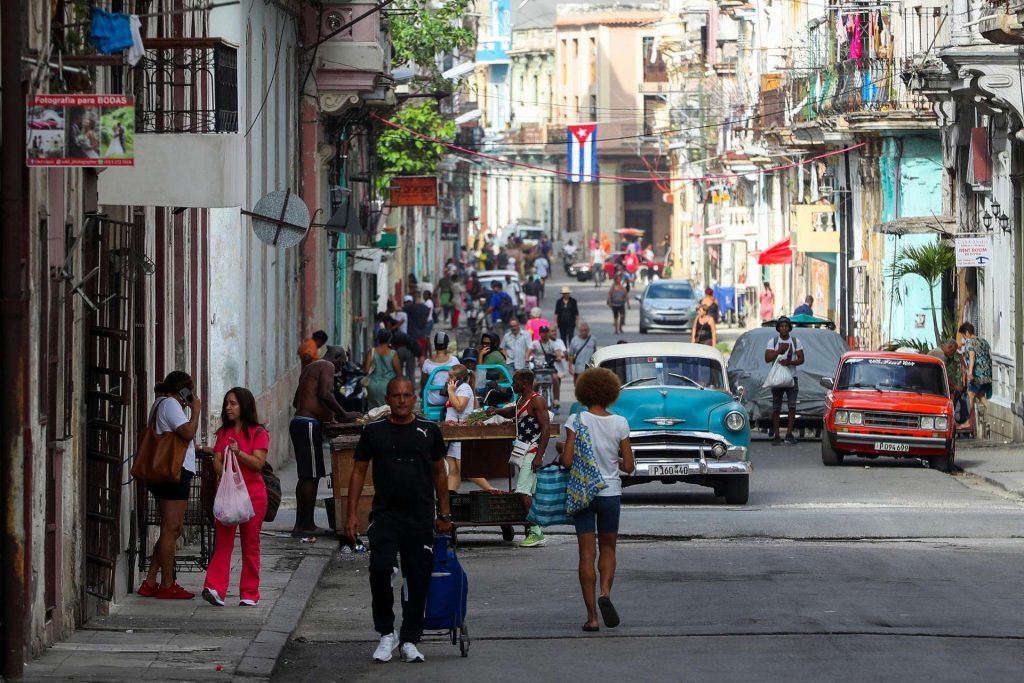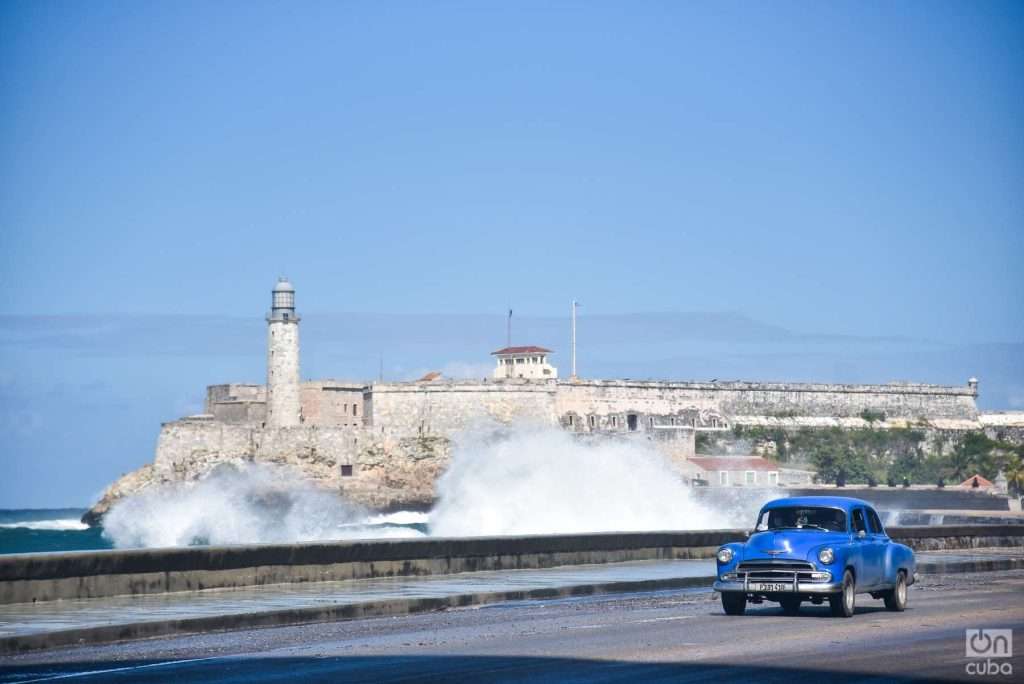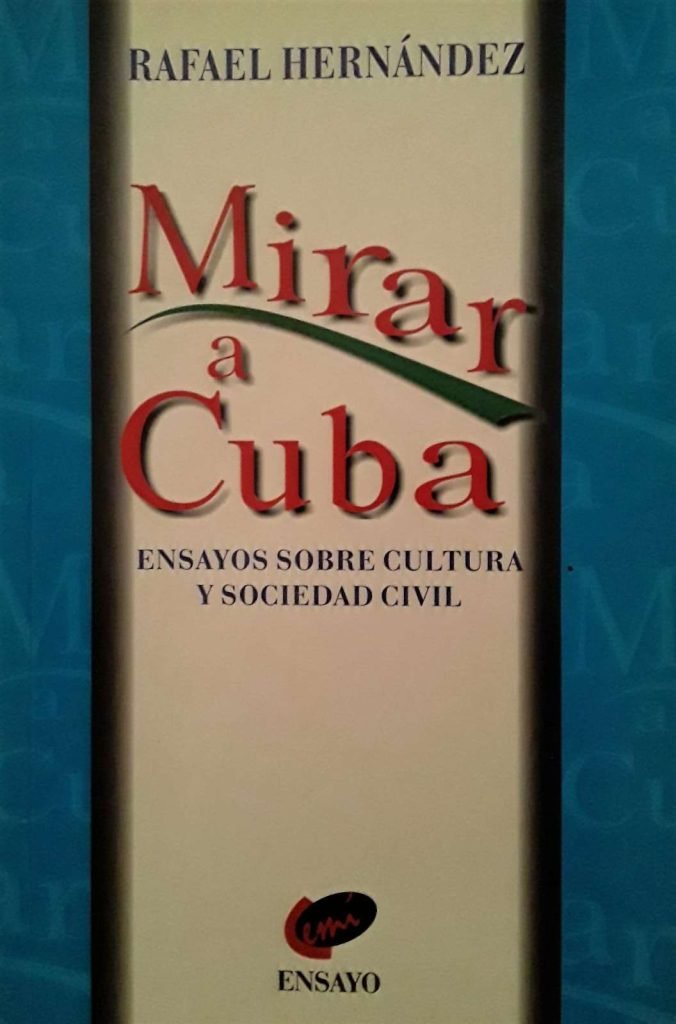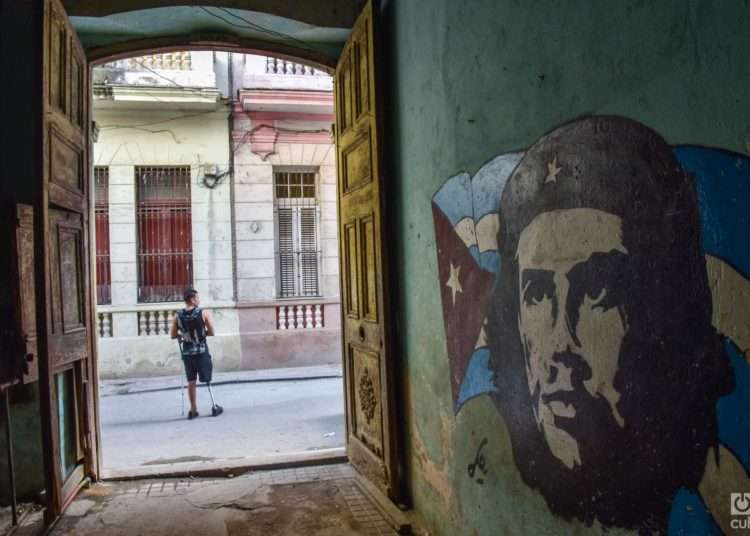Alluding to the popularity of Heredia’s “Ode to Niagara,” Rubén Martínez Villena baptized his famous “Canción del sainete póstumo” (“I will die of anything….”) as his “Niagarita” (little Niagara). That is why Roberto Retamar once told us that “El otro” (“We the survivors, to whom we owe the survival.…”) was going to be his “Niagarita.” It may be, however, that “Felices los normales” (“those strange beings….”) ends up being Roberto’s most remembered poem. You never know.
All this is to refer to an essay of mine, entitled “Mirar a Cuba” (Looking at Cuba), written and published thirty years ago. In addition to proposing its rereading here, and seeing how old it has gotten, I want to take the opportunity to tell a little about its intrahistory, the situation and immediate posterity that surrounded it. Not only because it may be, let’s say, “my Niagarita,” but because many ignore that part of our recent history, of which we are part, often without knowing it.
As we began to descend the maelstrom of the Special Period, the cultural and intellectual world was abuzz with ideas. No electricity, no fuel, no buses, no agricultural markets, no dollar stores that you could enter, and there was no paper to print magazines (nor were there digital publications like now, of course). In that deep whirlpool where we increasingly fell each day, the resonances of the 1980s still hovered around us.

The critical and revisionist spirit that settled in the final part of that decade is essential to understand the 1990s, especially since some evoke it today without having any idea of what it was.
The so-called “Rectification of errors and negative trends” launched to review the Soviet economic model had opened the Pandora’s box of Cuban society. The public debates on the “Rectification” opened up, for the first time, to critical issues. Discussions about political participation, freedom of expression, inequalities, discrimination and persistent prejudices (racial, religious, sexual), a crisis of the orthodox Marxism that was taught everywhere, resonances from the Soviet perestroika, led to an exceptional document — also forgotten today — entitled “Call to the 4th Congress of the Communist Party of Cuba” (whose reading I recommend, at least once).
The setback of the Special Period suddenly stopped that “Rectification,” without having succeeded in replacing the criticized model; rather dragging it on.
It was those resonances of inconclusive discussions that led to Armando Hart’s meetings with a group of writers and artists in the courtyard of the Center for Martí Studies, at Calzada and 4, between 1992 and 1993.
Those informal meetings, in which Hart was present as one more of the participants, put all kinds of problems on the table, around which Abel Prieto, Senel Paz, Francisco López Sacha, Norberto Codina and other writers would gather on Saturdays. Based on my notes from those meetings I wrote a personal reflection focused on the nature of our political problems, within the framework of the ongoing social, cultural and ideological changes, and their representations abroad. That mammoth text had 45 pages.
Getting it published in the midst of the prevailing power cuts seemed almost impossible, and doing it outside first did not interest me. The only magazine that had managed to resurface, after being interrupted between late 1990 and January 1992, was La Gaceta, of the UNEAC (Union of Writers and Artists of Cuba), whose president, Abel Prieto, had shown enthusiasm when he read it.
“If you reduce it to 15 pages, we publish it,” he told me. I spent a good part of that August of 1993 taking advantage of the few hours we had electricity to write, after sixteen versions, what would become “Looking at Cuba.”

It came out heading the September-October issue of La Gaceta, accompanied by some memorable texts; in particular, the special selection on Cuban literature prepared by Ambrosio Fornet, in which authors such as Roberto González Echeverría and Gustavo Pérez-Firmat appeared for the first time, not exactly fellow travelers of the Revolution. And an extraordinary interview by Rebeca Chávez with Titón, who had just finished filming Strawberry and Chocolate and harshly criticized the ideological apparatuses that had orchestrated the repudiation of Alicia en el pueblo de Maravillas (Alice in Wondertown), by Daniel Díaz Torres, in the summer of 1991, barely two years before. The dynamics of the ongoing change were palpable.
In those pre-Internet days, the reaction to my essay couldn’t have been more instantaneous. The controversy began with the narrator Armando Cristóbal, commenting on the very pages of La Gaceta about the use I made of civil society, a concept with “Hegelian” resonances, according to him, surpassed by Marx himself; in addition to being used by the enemy to attack us, opposing society and the State.
I thanked Cristóbal for his text, very respectful and sober, which was perfect for taking out what I had left in while I rewrote “Looking at Cuba.” In the debate with him and, incidentally, with the Mexican Jorge Castañeda, whose Utopia Unarmed had just been published, I explained the genealogy of the concept, criticized the characterizations of civil society as “Hegelian” and vindicated its use by Marx and Gramsci in their mature works. And also, naturally, in contemporary Marxism and anti-capitalist social movements, apart from the Soviet vulgate and its usage by anti-communists in Eastern Europe, and by their Western allies.
The posterity of “Looking at Cuba” included such a prolific debate that, just shortly after, Milena Recio was able to write her undergraduate thesis based on a series of interviews with the participants: Raúl Valdés Vivó, Armando Hart, Jorge Luis Acanda, Haroldo Dilla, Isabel Monal, Miguel Limia, Berta Álvarez.…
The chain reaction, which extended throughout the 1990s, was not limited to cultural magazines and academic debates. Some denounced that “they want to stick us with civil society here,” to finally opt for “genuine socialist civil society, made up of the Committees for the Defense of the Revolution (CDRs), the Federation of Cuban Women (FMC), the Organization of Cuban Unions (CTC),” etc., always with a bias of suspicion. They said that in the Cuban debate around the concept, academicians were giving in to pressure from the enemy, who wanted to “corner us.”
The most interesting thing was not only how, despite these allergic reactions, the very idea of civil society would become part, over time, of political discourse, but also broadened the intellectual pitch with which we Cubans digested the surrounding reality, and showed that heterodoxy, so often ostracized in the past, was essential to analyze what was happening to us.
That was what I wanted to do in “Looking at Cuba,” beyond the blessed term and its genetic code.
Approaching ourselves to the relationship between intellectuals and politics, between politicians and culture, between changes in society and consensus, between political culture and ideology, in a transition dynamic, required getting rid of the dead weight that would not let us think.

Some readers will say that this fight is not over. And they are right. In fact, it has been my modest experience over almost thirty years, bringing out the Temas magazine, in the Last Thursday debates, the Catalejo blog, the e-books brought out by Temas publishers.
“It hasn’t been easy” is hardly an understatement. But, after all, let’s say that all trades have their professional diseases, of which it is only possible to be wary.
Without “Looking at Cuba,” that opportunity would not have come to me. Neither the intense debate that gives meaning to what I wrote later. It was worth having distilled it in that decisive summer of 1993, and continuing to defend its ideas in subsequent essays that would end up forming a volume with the same title, published in Cuba only once, in 1999, with 500 copies; and later republished, in Mexico and in the United States. As those editions have been out of print for a while, I leave here the original essay for the reader to see if it is still readable. No pity please.

As for whether or not it is my “Niagarita,” I already said it: one never knows.










